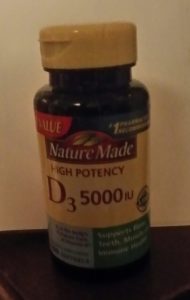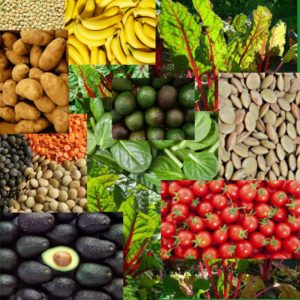I've been having some health issues for a while now. Things like inflammation, water gain, swelling and high blood pressure. So I started looking for natural remedies for these symptoms. I've tried curcumin, cherry juice, fish oil and other herbs and vitamins. Those things do help, but, WOW! When I started eating grapefruit daily did I ever notice a huge change! I looked up the wonderful fruit after I noticed that my body was responding very quickly to its effects. Not only has grapefruit helped with my symptoms but it is also praised as a cancer fighter, an antiseptic, a wonderful detox fruit and a large contributor to weight loss! (stepin2mygreenworld.com). What's so great about that? Well, it boosts the immune system, lowers cholesterol, fights bacteria and increases liver function which enables more toxins to be broken down in the body. All in one round, pink grapefruit! The stuff is amazing! It also lowers triglycerides by as much as 27%, therefore preventing arteries to clog as easily. So it lowers the risk of heart disease! (health.com). Red and pink grapefruit are the best types since they contain more beta carotene and lycopine. Grapefruit also helps control blood sugar. Eating the fruit itself is the best form of consumption but grapefruit juice also helps. And there's more! Grapefruit can speed up wound healing and energize you. (health.com). The only negative thing I've found is that grapefruit interacts with some medications at a dangerous level. So be sure to ask your doctor or pharmacist if it is safe for you to consume. When they give you a green light, go straight to the store! Grapefruit is definitely a superfood!
Fresh Bread
There's just something amazing about a simple loaf of fresh bread. The smell is intoxicating, the texture comforting and the taste of pure deliciousness! To me, there isn't much better food than fresh bread hot from the oven. Here is a picture to alight your taste buds!
So easy to do yet so satisfying! Go bake a loaf and enjoy!!
Have You Tried Vitamin D To Ease Psoriasis Symptoms?
As a sufferer from psoriasis and psoriatic arthritis, I have tried numerous things over the years to ease my symptoms. Some things helped, others didn't. One thing I've noticed that helps significantly (if I remember to take it) is Vitamin D.
Since I'm interested in becoming healthier and happier, I'm really into vitamins. I take them whenever I remember (I'm really busy and many times I 'space out' my vitamin regimen). but when I am alert and on the ball (!!) Vitamin D has proven quite helpful.
I've noticed that when I take a high potency dose (5000 IU's) of Vitamin D, the buildup of plaques are greatly reduced. Also the itching. (Which, trust me, is a welcome relief! You know what I'm talking about if you're a fellow sufferer.)
I know that sounds like a lot of Vitamin D....and it is. 4,000 IU's a day is considered a safe upper limit. So my pills are just a touch over that. I have done some research and I think taking 5,000 IU's every other day is an acceptable amount. Maybe even twice a week. So I guess it's a good thing that I forget to take it rather frequently! That's probably why I'm doing well with it. I do remember to take it at least every 3 days. If you're a fellow sufferer you should give it a try.
An average sized adult is encouraged to take 1,000-3,000 IU's a day. Larger sized (extra fun sized) adults are encouraged to take a little more which leads to the 4,000 IU a day mark. It is possible to overdose on Vitamin D since it's fat soluble, which means your body has a hard time getting rid of it it you take too much. The symptoms of too much Vitamin D are: -high blood calcium (called hypercalcemia) which can be indicated by a blood test -feeling sick or thirsty -pain, confusion, tiredness (I have that. Too much calcium? I think not. Too much of life! Ha!) -constipation, diarrhea, frequent urination ( I could make a funny for this but you might not think it's very funny.....)
Vitamin D3 is more powerful than Vitamin D2 and raises blood levels almost twice as much so be sure to keep that in mind. Also, children require much less Vitamin D. (The more you weigh, the higher your dose to the 4,000 IU daily mark). Infants are encouraged to have about 400 IU a day while older children are encouraged to have about 600 IU a day. If your kids are out in the sun, they'll need less. (One of the beauties of sunlight? Natural increases in Vitamin D!)
Sooo.....you may want to visit the local pharmacy to invest in a bottle. See if it gives you some relief. You might be very glad you did!
A Lack Of Magnesium and Potassium Can Cause Insomnia
If you're like me...and I am guessing a lot of you are, insomnia can be an issue. So I decided to research the topic and here is one of the first things I learned: a lack of magnesium and potassium can cause insomnia!
We all know that food is important but many times we don't keep in the forefronts of our minds that food is the fuel we live off of. (At least I don't!) I have a tendency to get super busy and only concentrate on eating "healthy", a.k.a. fruits, veggies and grains (and in no particular order). I gave up meat a while ago so they're all I really eat. And I take vitamins....when I remember. And yes, I admit, I eat junk food. It's been a lifelong quest to slow down on the sugar and carbs....and it will continue to be a quest! It is a little easier to stay away from these goodies when I eat healthy, but I still indulge more than I should! Anyway, I digress.....
To try to help with the insomnia issue, I've decided to eat more foods with magnesium and potassium. So I researched the foods rich in both and here is what I found:
Potassium: The foods highest in potassium are bananas, sweet potatoes, orange juice, tomato sauce, carrots, milk and yogurt. I like the first four. The last three? Not so much. Also prunes (which I can eat a few of) and fish (which I don't eat at all.) Plus dark leafy greens (I can do that!) and apricots (not so much). I'll experiment. And let you know how it goes.
Magnesium: The food highest in magnesium are green leafy veggies. Plus pumpkin seeds, almonds, avocados (yum!) and figs (not so sure about those) as well as bananas and dark chocolate (Okay! Hand it over!). You could also go catch a fish and cook it up with some whole grains and beans for a magnesium feast!
I'll attempt to make it a priority for the sake of the maintenance of my sanity! In a perfect world, that would mean...hmmm....a meal plan...oatmeal and bananas for breakfast with a side of orange juice (sounds good), a big salad for lunch topped with beans, carrots and quinoa (I don't think so.) How about a salad with some type of seeds, tomatoes, avocados and dressing? (Yes. Much better.) And a plate of spaghetti with lots of tomato sauce for supper? (Sure. Why not?).
Less than thirty percent of adults eat the recommended daily allowance of magnesium. If you drink soda, eat refined sugars, drink caffeine every day (I'm guilty!), drink more than seven alcoholic drinks a week or experience anxiety, hyperactivity and difficulty sleeping, a lack of magnesium is most likely one of the culprits. The RDA of magnesium is about 400 mg a day for men and 310 for women.
As far as potassium? It can cause sleeplessness, numbness, constipation, irregular heartbeat, excessive sweating and cramps to name a few. Less than two percent of people eat the amount of potassium they need a day. (That's crazy! Two percent?? Yikes!) Adults should be consuming around 4,700 milligrams of potassium a day. That's equal to three russet potatoes (about 420 mg each), two bananas (about 350 mg each), two cups of cooked lentils (beans-730 mg each), three cups of swiss chard (58 mg each) and a little less than a cup of beet greens which are loaded with potassium at 1309mg/cup.
Wow. To eat responsibly almost requires becoming a mathematician. But then it would be worth the effort. Maybe creating a chart is the way to go. That might end up being one of my goals! Another good thing to do? Find some awesome vitamins and remember to take them every day!
I'll post more as I figure things out. Thanks for reading!



